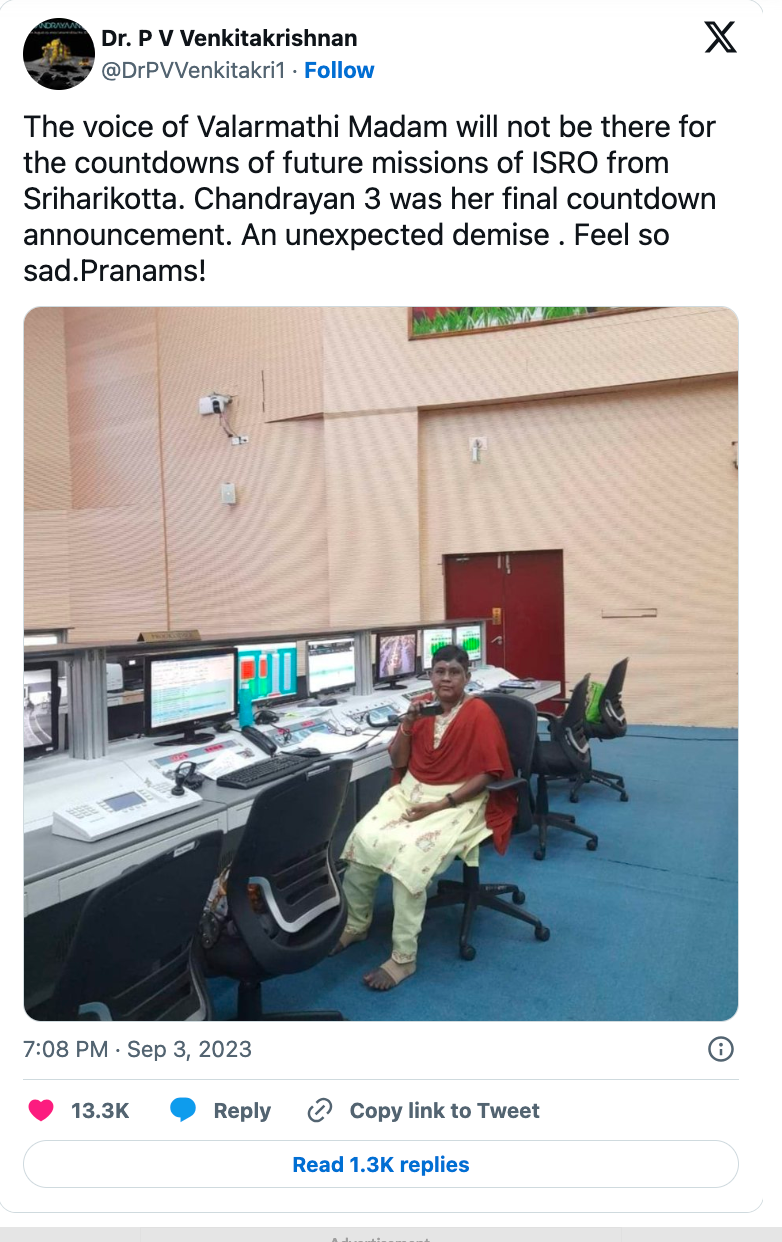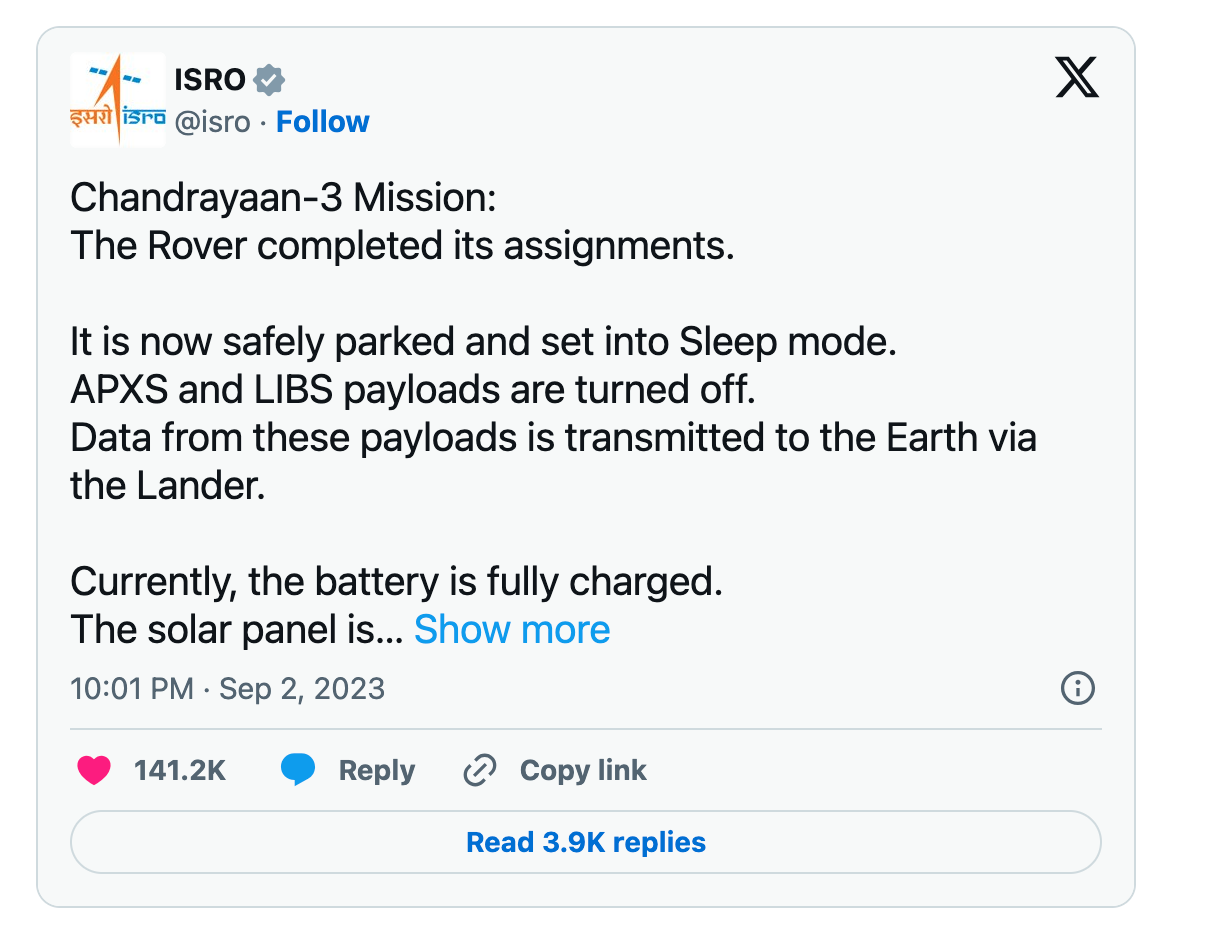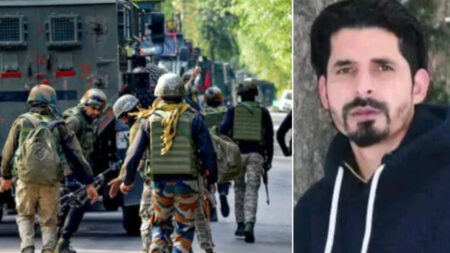N Valarmathi, an ISRO scientist who was the voice behind the organization’s rocket countdown launches, including Chandrayaan-3, which ended up being her final launch, died on Saturday night in Chennai after suffering a heart attack, according to a report by WION.
Who is Valarmathi?
Valarmathi, who was born on July 31, 1959, joined ISRO in 1984 and took part in a number of missions. She oversaw the construction of RISAT-1, the nation’s second radar imaging satellite (RIS), which was constructed entirely within India.
In April 2012, RISAT-1 was successfully launched. APJ Abdul Kalam, often known as the “Missile Man of India,” was a former president of India. On Independence Day in 2015, Valarmathi became the first recipient of the renowned Abdul Kalam Award, which was established by the Government of Tamil Nadu in his honor.
Former ISRO director posts condolences
Dr. PV Venkitakrishnan, a former director of ISRO, posted his condolences for her loss on X (formerly Twitter) and asserted that Chadrayaan-3 was her final countdown notification.
“The voice of Valarmathi Madam will not be there for the countdowns of future missions of ISRO from Sriharikotta. Chandrayan 3 was her final countdown announcement. An unexpected demise. Feel so sad. Pranams!” On X, Dr. Venkitakrishnan wrote.
Image source: Twitter
Twitter responses to the news
The deceased ISRO scientist received many tributes on social media.
Jai hind ….she will be remembered as her countdown ….finally ended and gave us shivshakti point at the moon ….@isro, a twitter user wrote on X.
Another Twitter user said, “Om Shanti.”
Very sad to hear this. Condolences to the family, the third user wrote.
In August, Chandrayaan-3, an Indian spacecraft, became the first nation to set foot on the south pole of the moon. It is also the fourth nation, behind the US, China, and Russia, to have accomplished a successful lunar landing.
The three modules that make up the Chandrayaan-3 mission are the propulsion module, which sent the lander and rover modules into a 100-kilometer lunar orbit, the lander module, which executed the lunar craft’s soft landing, and the rover module, which is used to investigate the moon’s surface.
India’s moon rover, the first spacecraft to reach the lunar south pole, was just turned off after its two-week mission of conducting experiments, according to the nation’s space agency.
Image source: Twitter
Pragyan rover put to sleep
The Indian Space Research Organisation (ISRO) announced the Pragyan rover from the Chandrayaan-3 spacecraft had been “set into Sleep mode” but with batteries filled and the reception turned on late on Saturday.
The Indian Space Research Organisation (ISRO) announced the Pragyan rover from the Chandrayaan-3 spacecraft had been “set into Sleep mode” but with batteries filled and the reception turned on late on Saturday.
India joined the United States, China, and the former Soviet Union by making a lunar landing. Shortly after Russia’s Luna-25 crashed during a related attempt, it outperformed them in reaching the rocky south pole.
Chandrayaan-3’s flawless touchdown in 2024 was celebrated widely in the country with the biggest population after a failed attempt in 2018. Media outlets praised the landing as India’s biggest scientific triumph.
According to ISRO, Pragyan traveled more than 100 meters (330 feet), demonstrating the presence of oxygen, iron, and other elements on the moon.
India is now waiting to see if a probe it sent into space on Saturday would be successful in studying the sun and analyzing solar winds, which can alter the earth’s magnetic field and result in auroras.
As it gets ready for its 1.5 million-kilometer (930,000-mile) voyage, ISRO declared on Sunday that “the satellite is healthy” and in earth orbit.















